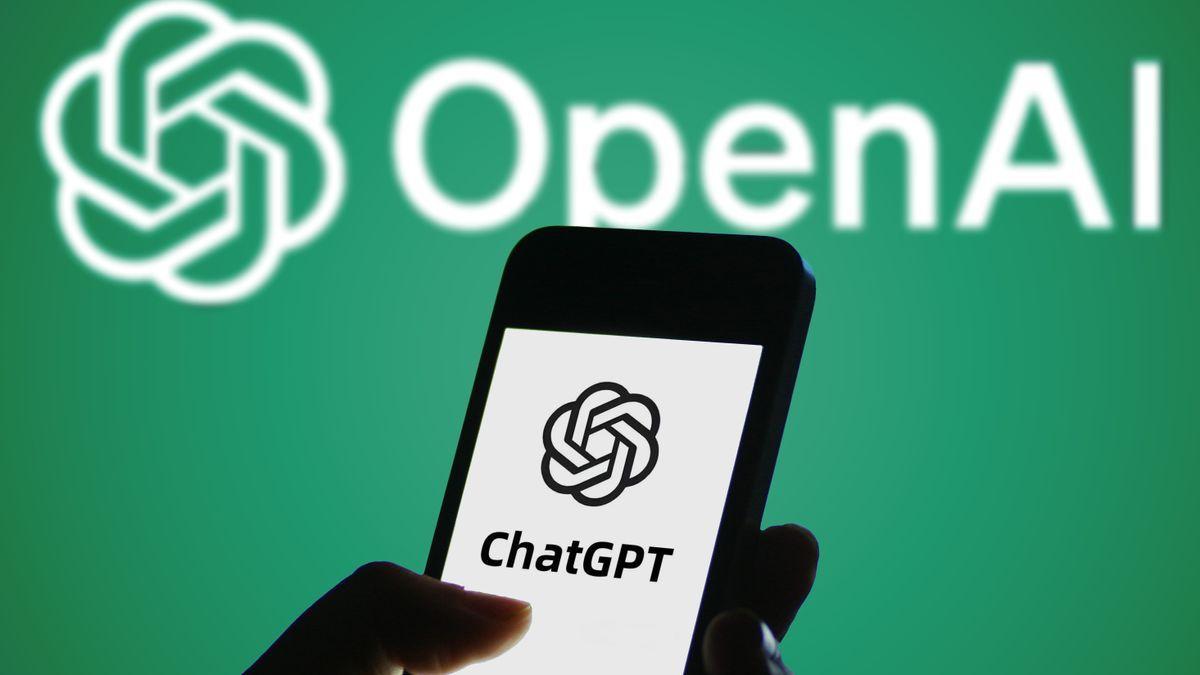AI Algorithm Detects One-Third of Missed Breast Cancers in 3D Mammography Screenings
2 Sources
2 Sources
[1]
AI algorithm identifies one-third of missed breast cancers in DBT screenings
Radiological Society of North AmericaJul 29 2025 An AI algorithm for breast cancer screening has potential to enhance the performance of digital breast tomosynthesis (DBT), reducing interval cancers by up to one-third, according to a study published today in Radiology, a journal of the Radiological Society of North America (RSNA). Interval breast cancers-symptomatic cancers diagnosed within a period between regular screening mammography exams-tend to have poorer outcomes due to their more aggressive biology and rapid growth. DBT, or 3D mammography, can improve visualization of breast lesions and reveal cancers that may be obscured by dense tissue. Because DBT is relatively new as an advanced screening technology, long-term data on patient outcomes are limited in institutions that have not transitioned to DBT until recently. "Given the lack of long-term data on breast cancer-related mortality measured over 10 or more years following the initiation of DBT screening, the interval cancer rate was often used as a surrogate marker," explained study author Manisha Bahl, M.D., M.P.H., breast imaging division quality director and co-service chief at Massachusetts General Hospital and associate professor at Harvard Medical School. "Lowering this rate is assumed to reduce breast cancer-related morbidity and mortality." In a study of 1,376 cases, Dr. Bahl and her colleagues retrospectively analyzed 224 interval cancers in 224 women who had undergone DBT screening. On those DBT exams, the AI algorithm (Lunit INSIGHT DBT v1.1.0.0) correctly localized 32.6% (73/224) of cancers that were previously undetected. My team and I were surprised to find that nearly one-third of interval cancers were detected and correctly localized by the AI algorithm on screening mammograms that had been interpreted as negative by radiologists, highlighting AI's potential as a valuable second reader." Dr. Manisha Bahl, M.D., M.P.H., study author According to the researchers, the Radiology study may represent the first published research to specifically examine AI assistance in detecting interval cancers on screening DBT exams. "Several studies have explored the use of AI to detect interval cancers on screening two-dimensional digital mammography exams, but to our knowledge no previously published literature has focused on the use of AI to detect interval cancers on DBT," Dr. Bahl explained. To avoid overestimating the sensitivity of the AI algorithm, Dr. Bahl's team employed a lesion-specific analysis that "credits" the AI algorithm only when it correctly identifies and localizes the exact site of the cancer. "In contrast, an exam-level analysis gives AI credit for any positive exam, even if its annotation is incorrect or unrelated to the actual cancer site, which may inflate the algorithm's sensitivity," Dr. Bahl said. "Focusing on lesion-level accuracy provides a more accurate reflection of the AI algorithm's clinical performance." Cancers detected by the algorithm tended to be larger, and they were more likely to be lymph node-positive, Dr. Bahl noted. "These findings suggest that AI may preferentially detect more aggressive or rapidly growing tumors, or that it identifies missed cancers that were already advanced at the time of screening," she said. Among 1,000 patients-including those with true-positive cancers based on pathology and those with true-negative and false-positive outcomes based on one-year follow-up-the algorithm correctly localized 84.4% of 334 true-positive cancers. It also correctly categorized 85.9% of 333 true-negative cases and 73.2% of 333 false-positive cases as negative. "Our study shows that an AI algorithm can retrospectively detect and correctly localize nearly one-third of interval breast cancers on screening DBT exams, suggesting its potential to reduce the interval cancer rate and improve screening outcomes," Dr. Bahl said. "These findings support integrating AI into DBT screening workflows to enhance cancer detection, but its real-world impact will ultimately depend on radiologist adoption and validation across diverse clinical environments." Radiological Society of North America Journal reference: Bahl, M., et al. (2025) AI to Reduce the Interval Cancer Rate of Screening Digital Breast Tomosynthesis. Radiology. doi.org/10.1148/radiol.241050.
[2]
AI catches one-third of interval breast cancers missed at screening
An AI algorithm for breast cancer screening has the potential to enhance the performance of digital breast tomosynthesis (DBT), reducing interval cancers by up to one-third, according to a study published today in Radiology. Interval breast cancers -- symptomatic cancers diagnosed within a period between regular screening mammography exams -- tend to have poorer outcomes due to their more aggressive biology and rapid growth. DBT, or 3D mammography, can improve visualization of breast lesions and reveal cancers that may be obscured by dense tissue. Because DBT is relatively new as an advanced screening technology, long-term data on patient outcomes are limited in institutions that have not transitioned to DBT until recently. "Given the lack of long-term data on breast cancer-related mortality measured over 10 or more years following the initiation of DBT screening, the interval cancer rate was often used as a surrogate marker," explained study author Manisha Bahl, M.D., M.P.H., breast imaging division quality director and co-service chief at Massachusetts General Hospital and associate professor at Harvard Medical School. "Lowering this rate is assumed to reduce breast cancer-related morbidity and mortality." In a study of 1,376 cases, Dr. Bahl and her colleagues retrospectively analyzed 224 interval cancers in 224 women who had undergone DBT screening. On those DBT exams, the AI algorithm (Lunit INSIGHT DBT v1.1.0.0) correctly localized 32.6% (73/224) of cancers that were previously undetected. "My team and I were surprised to find that nearly one-third of interval cancers were detected and correctly localized by the AI algorithm on screening mammograms that had been interpreted as negative by radiologists, highlighting AI's potential as a valuable second reader," Dr. Bahl said. According to the researchers, the Radiology study may represent the first published research to specifically examine AI assistance in detecting interval cancers on screening DBT exams. "Several studies have explored the use of AI to detect interval cancers on screening two-dimensional digital mammography exams, but to our knowledge no previously published literature has focused on the use of AI to detect interval cancers on DBT," Dr. Bahl explained. To avoid overestimating the sensitivity of the AI algorithm, Dr. Bahl's team employed a lesion-specific analysis that "credits" the AI algorithm only when it correctly identifies and localizes the exact site of the cancer. "In contrast, an exam-level analysis gives AI credit for any positive exam, even if its annotation is incorrect or unrelated to the actual cancer site, which may inflate the algorithm's sensitivity," Dr. Bahl said. "Focusing on lesion-level accuracy provides a more accurate reflection of the AI algorithm's clinical performance." Cancers detected by the algorithm tended to be larger, and they were more likely to be lymph node-positive, Dr. Bahl noted. "These findings suggest that AI may preferentially detect more aggressive or rapidly growing tumors, or that it identifies missed cancers that were already advanced at the time of screening," she said. Among 1,000 patients -- including those with true-positive cancers based on pathology and those with true-negative and false-positive outcomes based on one-year follow-up -- the algorithm correctly localized 84.4% of 334 true-positive cancers. It also correctly categorized 85.9% of 333 true-negative cases and 73.2% of 333 false-positive cases as negative. "Our study shows that an AI algorithm can retrospectively detect and correctly localize nearly one-third of interval breast cancers on screening DBT exams, suggesting its potential to reduce the interval cancer rate and improve screening outcomes," Dr. Bahl said. "These findings support integrating AI into DBT screening workflows to enhance cancer detection, but its real-world impact will ultimately depend on radiologist adoption and validation across diverse clinical environments."
Share
Share
Copy Link
A new study reveals that an AI algorithm can identify nearly one-third of interval breast cancers missed in digital breast tomosynthesis (DBT) screenings, potentially improving cancer detection and patient outcomes.
AI Algorithm Shows Promise in Detecting Missed Breast Cancers
A groundbreaking study published in the journal Radiology has revealed that an artificial intelligence (AI) algorithm can significantly enhance the performance of digital breast tomosynthesis (DBT), also known as 3D mammography, in breast cancer screening. The research, conducted by Dr. Manisha Bahl and her team at Massachusetts General Hospital and Harvard Medical School, demonstrates that AI has the potential to reduce interval cancers by up to one-third
1
.Understanding Interval Cancers and DBT
Interval breast cancers, which are symptomatic cancers diagnosed between regular screening mammography exams, often have poorer outcomes due to their aggressive nature and rapid growth. Digital breast tomosynthesis, a relatively new advanced screening technology, improves the visualization of breast lesions and can reveal cancers that may be obscured by dense tissue
2
.
Source: Medical Xpress
Study Findings and Methodology
The research team analyzed 1,376 cases, including 224 interval cancers in women who had undergone DBT screening. The AI algorithm, Lunit INSIGHT DBT v1.1.0.0, correctly localized 32.6% (73/224) of cancers that were previously undetected by radiologists
1
.Dr. Bahl emphasized the significance of these findings, stating, "My team and I were surprised to find that nearly one-third of interval cancers were detected and correctly localized by the AI algorithm on screening mammograms that had been interpreted as negative by radiologists, highlighting AI's potential as a valuable second reader"
2
.AI Performance and Accuracy
To ensure accurate assessment of the AI algorithm's performance, the researchers employed a lesion-specific analysis. This approach credits the AI only when it correctly identifies and localizes the exact site of the cancer, providing a more accurate reflection of its clinical performance
1
.In a subset of 1,000 patients, including those with true-positive cancers and those with true-negative and false-positive outcomes, the algorithm demonstrated impressive accuracy:
- Correctly localized 84.4% of 334 true-positive cancers
- Correctly categorized 85.9% of 333 true-negative cases
- Correctly identified 73.2% of 333 false-positive cases as negative
2
Related Stories
Implications for Cancer Detection and Treatment

Source: News-Medical
Interestingly, the study found that cancers detected by the AI algorithm tended to be larger and more likely to be lymph node-positive. Dr. Bahl noted, "These findings suggest that AI may preferentially detect more aggressive or rapidly growing tumors, or that it identifies missed cancers that were already advanced at the time of screening"
1
.Future Prospects and Challenges
While the study's results are promising, Dr. Bahl cautioned that the real-world impact of AI in breast cancer screening will depend on radiologist adoption and validation across diverse clinical environments. The integration of AI into DBT screening workflows has the potential to enhance cancer detection and improve screening outcomes, but further research and implementation strategies will be necessary
2
.References
Summarized by
Navi
[2]










